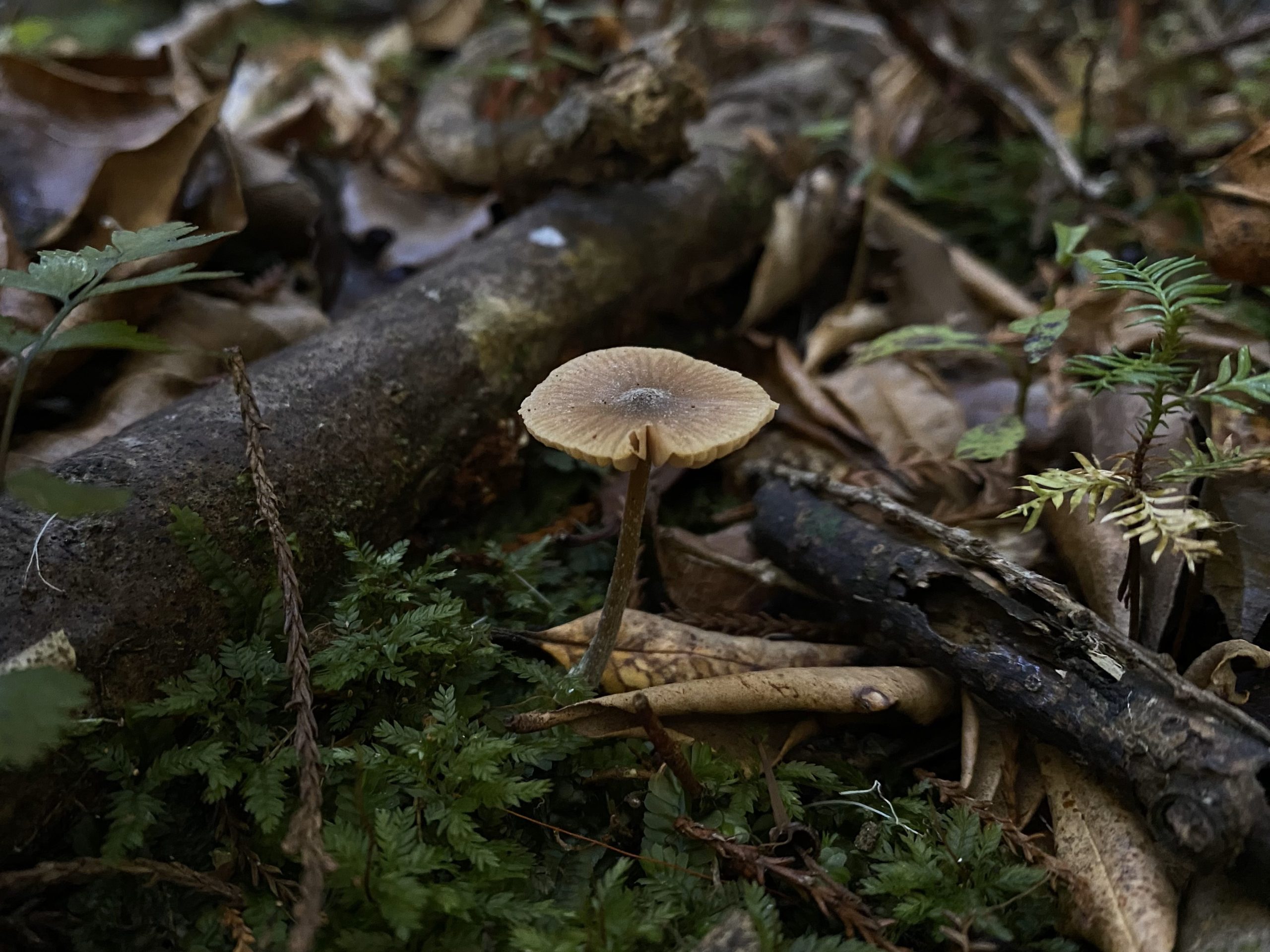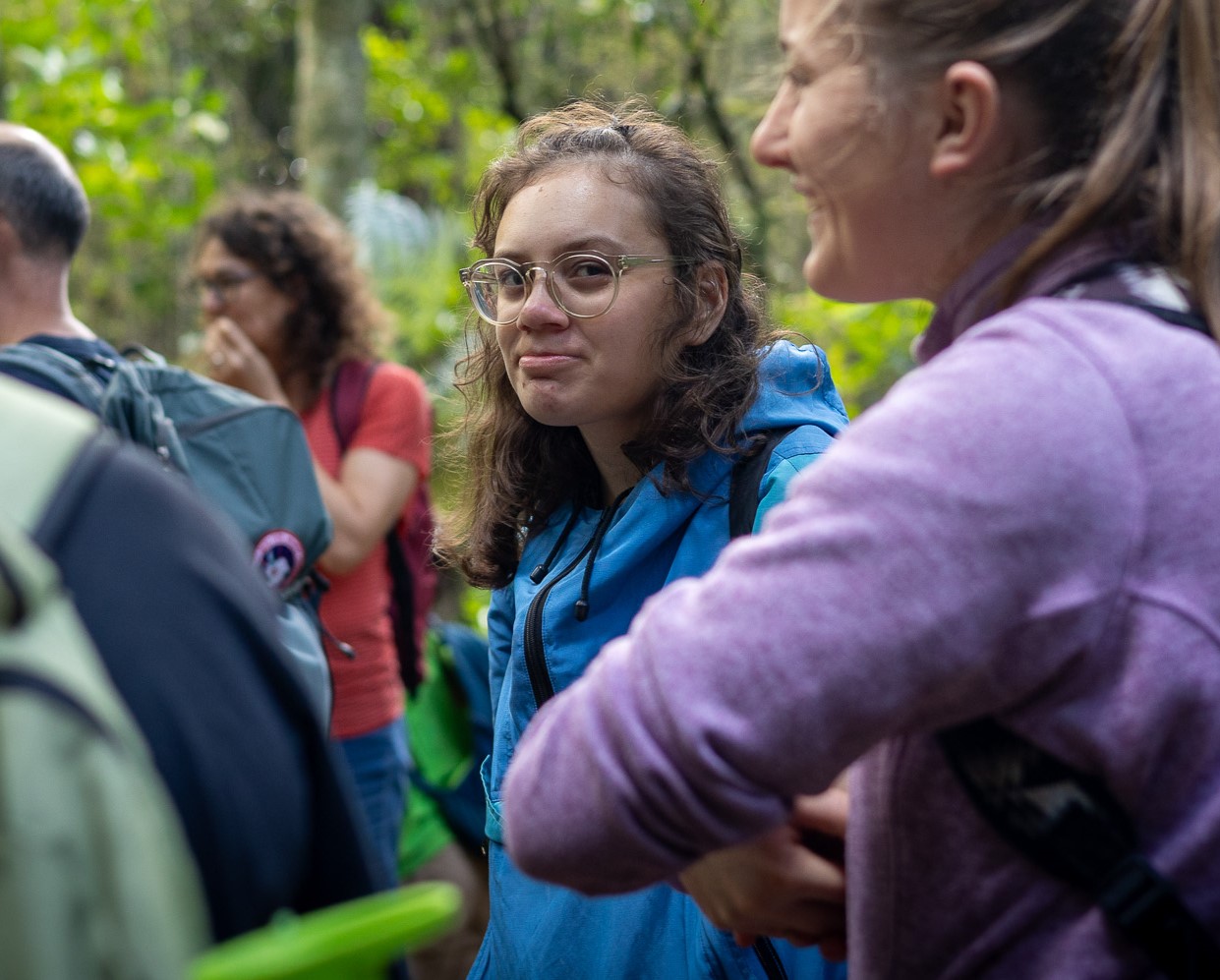22 August 2024

Genus Entoloma (Pinkgills) at Fensham Reserve, Carterton (photo by Tere Porter-Rawiri)
Tere Porter-Rawiri (Te Ātiawa) is a master’s student in Ecology at Victoria University of Wellington researching the importance of fungi to Māori raised in Wairarapa, and mātauranga Māori about fungi more broadly with the purpose of characterising fungal community diversity in restored, pastoral, and conserved Wairarapa wetland forests. Here, Tere reflects on her initial findings midway through her thesis year.
I’m constantly amazed by how much more there is to learn and there are always more connections with what I already know about our taiao. Attending a Matariki talk focusing on Tupuārangi at Te Papa by Puke Timoti (Tūhoe) made me reflect on my research and how it has broadened my view of our forest ecosystems. Listening to these insights deepened my appreciation for the intricate relationship my tūpuna had with the environment.
It’s a bit emotional for me to imagine the abundance of kai my tūpuna must have experienced—the sights, sounds, and tastes—like heaps of kererū flying away to the point where the entire sky is left in a dark cloud of shadows, or the slapping sounds of many tuna kuwharuwharu on their heke from freshwater out to the sea to spawn. It makes so much sense why our tūpuna were so closely connected to te taiao, but it’s also remarkable to think about the level of fundamental knowledge and practices required to attain such abundance and sustenance. At its core, being closely connected to te taiao involves observing and recording details like temperature, weather patterns, the sun’s position, stars, and moon phases. It’s about being in tune with what other creatures are up to, like manu flying to specific areas at specific times for specific food sources, insects dwelling throughout the soil, microbes cohabiting a new environment. It’s about understanding the different plant and tree species and knowing their timings for fruiting, flowering, and seeding, plus their various connections to other species —which is the basis of creating a maramataka.
But there’s also a part of being in tune to oneself and one’s emotions, understanding how our nervous system responds to the external world, and interpreting and making sense of the conditions around us. This forms the foundation of te ao Māori, where our observations of the environment are deeply embedded in te reo Māori.
We only have to look as far as Māori horticulture to reveal our expertise in cultivating crops, gardening, and soil science—so why wouldn’t we also be mycologists?
Mycologists study the science of fungi including taxonomy and genetics (or whakapapa), and biochemical properties, and uses by humans (such as tinder, tā moko, kai, and rongoā).
I started thinking about this during a kōrero with kaumātua Ra Smith (Ngāti Kahungunu ki Wairarapa) about any atua connected to fungi. There aren’t any that are formally documented atua connected to fungi (to my knowledge at least), but Ra thinks there would be one in a manuscript somewhere, he just hasn’t found it yet. We both acknowledged that fungi deserve a positive association in te ao Māori as they have nurturing characteristics in the way they co-exist with other beings. Fungi traverse the realms of te ao kikokiko (the physical world) and te ao wairua (the spiritual world) and it is likely that our tūpuna understood what was occurring despite the fact that fungi and the work they do are mostly unseen.
Fungi have important ecological roles which bridge these two realms through nutrient cycling and as decomposers in the soil and on trees. When trees come together as a network or grove with the help of our native endemic mycorrhizal fungi that grow on and in the tips of their roots, we know they are taonga as they enable our trees to provide bountiful food for our manu and materials for carvings, tools, and snares. When mushrooms grow on a tree, signalling its end of life, this likely served as a significant visual indicator of ecosystem wellbeing. Because of these important ecological roles, which are also culturally significant, it makes sense that the atua of fungi would likely be a wāhine, especially considering what we know about our female atua—like Hine-ahu-one, Hine-nui-te-pō, Papatūānuku, and Hine-te-iwaiwa. These atua are associated with land, earth, clay, and soil, which give life and also represent death and darkness.
This is an example of how whakapapa is fundamental to our understanding of how different reference points are layered to comprehend our genealogy, actions, behaviours, and sequential systems which also link to encompass our obligations to the environment, both tangible and intangible.
Interpreting our mātauranga in this way recognises that mātauranga is interlinked with practice and never exists in isolation. Examining what we already know allows us to make inferences about our fungi mātauranga. My ‘insights’ build on our existing understandings, offered in a different light to encourage a richer appreciation of our physical environment and extending this to include the many knowledge systems connected to it.
More Information
Learn more about Tere’s research here > Mātauranga Māori and diversity of fungi in wetland forests.


